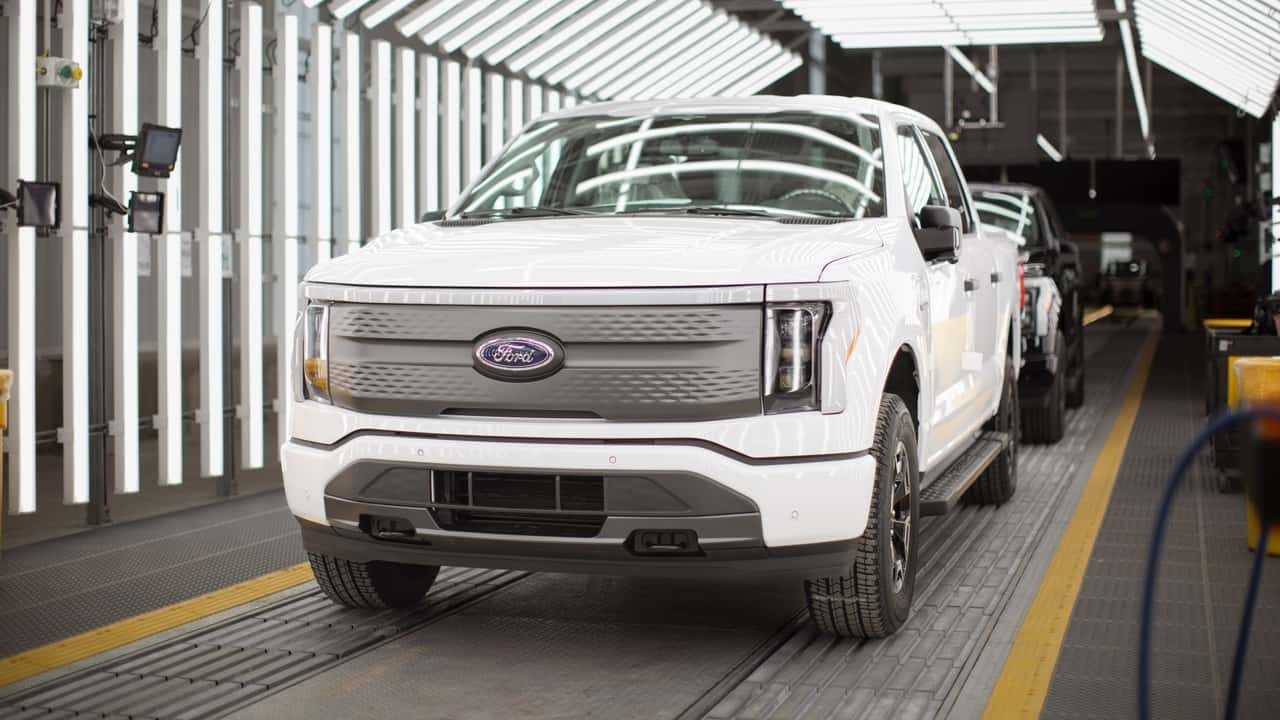The EPA has faced some criticism from climate activists for relaxing its emissions rules as automakers claimed that targets it set were physically impossible. Now, the NHTSA has also relaxed its MPG fleet goals to dovetail with the EPA’s relaxed requirements. For the 2031 model year, all light-duty trucks and cars must meet a CAFE fleet average of 50.4 mpg.
Despite that sky-high number, this is down from the NHTSA’s original proposal of a 55.7 MPG average by the 2032 model year. With these relaxed years, new cars need to improve by 2% each year between 2027 and 2031, while light trucks only need a 2% improvement from 2029 to 2031. Under the old proposal, cars would need to improve 2% per year from 2027 to 2032, while light trucks would need to come up 4% per year from 2027 to 2032.
Get Fully Charged
CAFE is binding
Corporate Average Fuel Economy standards, commonly referred to as “CAFE” is an average of a manufacturer’s model line meant to continually increase over time. Introduced in 1978, these fleet-wide averages must be achieved by every automaker, otherwise they face strict fines.
Reactions to the proposal have been mixed. Some, like the Alliance for Automotive Innovation, have praised the administration for incentivizing more fuel-efficient vehicles while creating a policy that they claim is more realistic and achievable. Others have slammed the Biden administration for officially relaxing the rules and, therefore, allowing automakers to continue to make gas-powered, gas-guzzling trucks and cars.
It’s still not quite clear what will happen next, though. The Biden Administration pushed back on criticism, insisting these new rules would allow automakers to craft and sell more efficient electric vehicles rather than focusing on gas-powered vehicles.
It’s kind of a six-in-one-hand, half-dozen-in-the-other conundrum when it comes to these new rules. On the one hand, 50.4 MPG is a pretty lofty number, no doubt buoyed by the sales of EVs and other PHEV models. On the other hand, it allows the big trucks and SUVs that we love so much here in the US to continue with relatively small economic improvements. It could also slow the adoption of EVs since the sales of EVs would offset the MPG average of any gasoline-powered car. The administration only targets EVs to make 30-56% of all vehicle sales between 2030 and 2032, way down from the 67% by 2032 made initially.
But, of the same token, the NHTSA can’t calculate EVs for its fuel economy averages. Many automakers claimed that reaching the original goals was completely impossible, and they’d face billions in fines.
The new rules claim that the U.S. will save 70 billion gallons of gasoline and more than 710 million metric tons of carbon dioxide through 2050. This is down from the original policy’s goals of 90 billion gallons of gas, and more than 900 million tons of carbon dioxide.
Still, these goals are somewhat of an imperfect win for the environment and transitioning away from fossil fuels. But, let’s hope and pray they don’t get eroded any further.
The National Highway Traffic Safety Administration (NHTSA) recently announced that it will be relaxing Corporate Average Fuel Economy (CAFE) standards for automakers, with the goal of achieving an average fuel economy of 50.4 miles per gallon (mpg) by 2031. This change represents a significant shift in the regulatory landscape for the automotive industry and has sparked debate among environmentalists, industry stakeholders, and policymakers.
The CAFE standards were first introduced in the 1970s in response to the Arab oil embargo, with the aim of reducing the country’s dependence on foreign oil and curbing greenhouse gas emissions. The standards have been periodically updated since then to reflect advancements in automotive technology and changes in market preferences. Under the previous rules, automakers were required to achieve an average fuel economy of 54.5 mpg by 2025.
The decision to relax the CAFE rules comes as a result of a regulatory review conducted by the NHTSA, which determined that the previous standards were overly ambitious and had placed undue burdens on the automotive industry. In a statement, the agency cited concerns about consumer choice, job creation, and the overall economic impact of the regulations as reasons for the change.
Proponents of the relaxed standards argue that they will provide much-needed flexibility for automakers, allowing them to focus on meeting consumer demand for larger, more powerful vehicles such as trucks and SUVs. They also argue that the new rules will help to stimulate economic growth and create jobs in the automotive sector.
However, critics of the decision have raised concerns about the potential environmental impact of the relaxed standards. They argue that the new rules will lead to increased greenhouse gas emissions and worsen air quality, undermining efforts to combat climate change. They also warn that the move could put the United States at a competitive disadvantage in the global marketplace, as other countries continue to push for stricter emissions standards.
It remains to be seen how automakers will respond to the new CAFE rules and what impact they will have on the overall automotive industry. While some may welcome the regulatory relief, others may see it as a missed opportunity to drive innovation and promote sustainability in the sector.
As the debate over the future of CAFE standards continues, it is clear that achieving a balance between economic considerations and environmental goals will be crucial. The NHTSA’s decision to relax the rules represents a significant shift in this ongoing conversation, and its implications will be closely watched in the years to come.

